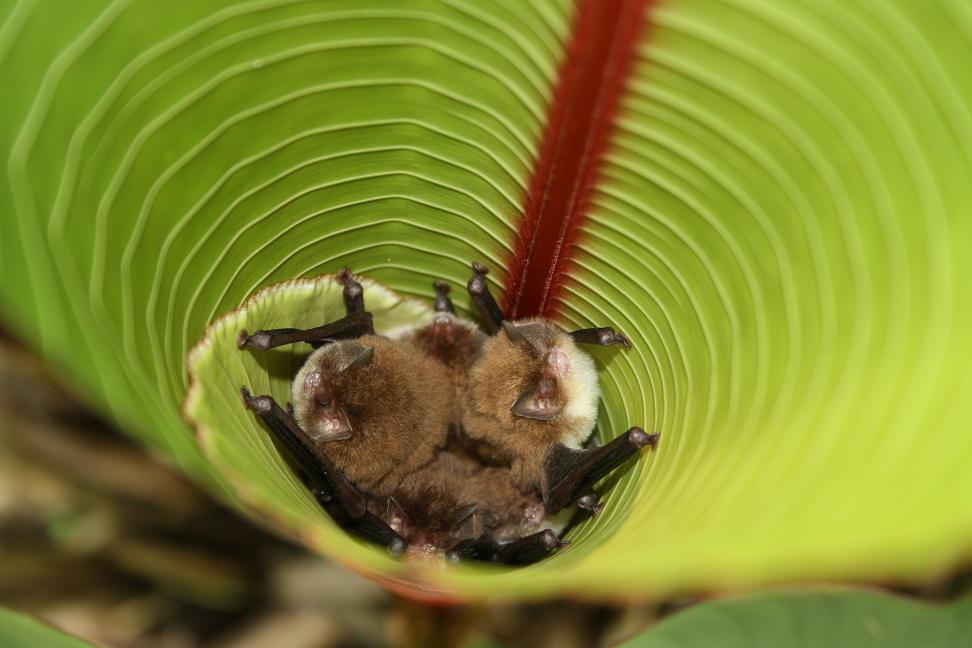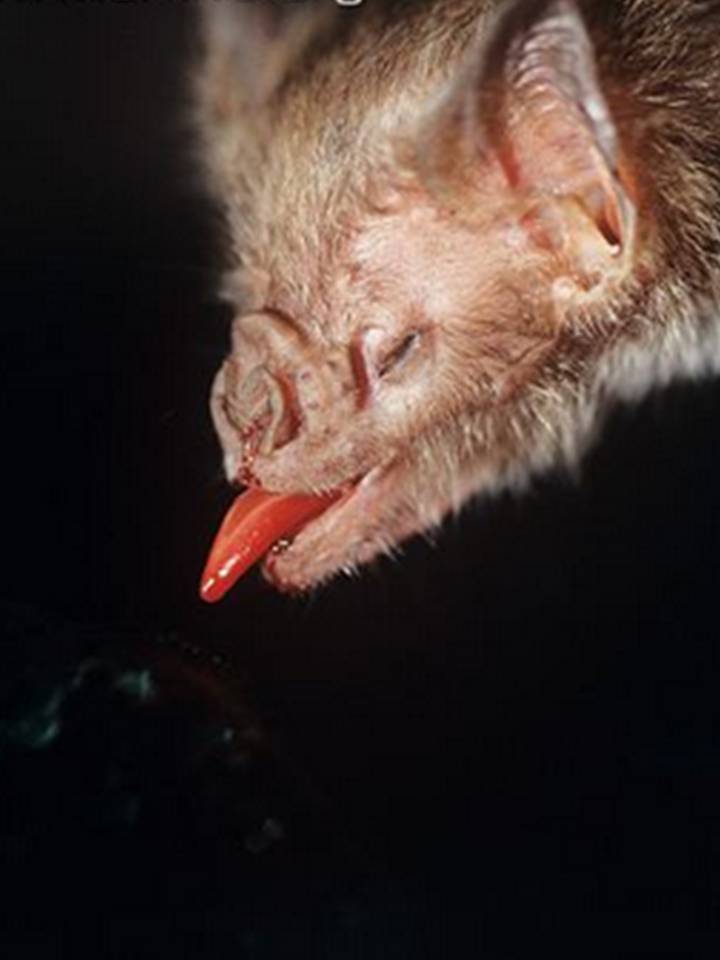When you buy through link on our site , we may earn an affiliate commission . Here ’s how it works .
Just as some bloom expend bright colors to pull insect pollinator , other plant life may use sound to lure in nectar - feed bats .
One rainwater - forest vine has a dish - shaped leafage located above a cluster of flowers that seem to help bats feel them ( and the plant ’s tasty ambrosia ) by reflect back the calls the flying mammal send out , new enquiry show . [ Video of the Discovery ]

This photo montage shows the Cuban nectar feeding bat Monophyllus beside the vine that scientists discovers attracts bats by producing an “echo beacon” with a special leaf. That sonar-reflecting leaf stands upright above the ring of flowers. The cup-like structures that hold the nectar hang below.
While there is other evidence that establish usebats ' sonar systemsto attract them , this is the first time scientists have shown that a plant can produce an " echo beacon " that cuts through transonic clutter of ruminate echoes , and that this sign can cut a bat ’s search sentence for food for thought in half , according to the researchers , take by Ralph Simon , a inquiry companion at the University of Ulm in Germany .
The vine , Marcgravia evenia , climbs tree in the rainwater woodland of southeastern Cuba . Its flowers are suspended in a band , above cuplike structures that hold sugary nectar intended to entice batty pollinators , whose necks and shoulders are powdered with pollen as they drink the nectar . The at-bat then carry the pollen between vine , fertilizing other flowers with it and helping the vine reproduce . [ Image of " screaming " vines ]
Like a artificial satellite looker , the reflecting telescope leaf is concave , and brook in an erect situation above the ring of flowers .

Bats voyage and search for foodby sending out gamy - frequency call option , and then take heed to the echo that bounce back .
And like bats would , the researchers bounced sound off the dish - shaped leaves as well as off unconstipated foliage leaves and then analyzed the echoes that come back . They found that a strong , perpetual replication could be find within a some 100 - degree range around the front of the dish - influence leave . Meanwhile , the reverberation from the foliage leafage was not constant , but varied drastically within 5 - degree increment , take a crap it less detectable . What ’s more , the lulu - forge leaves produced an echo with a classifiable , two - crown signal .
In another experiment , the research worker trainednectar - feeding batsto find a little , individual feeder ( a stand - in for a nectar - filled flower flower ) enshroud within fake foliage in the rainforest . The bats then searched for the affluent , which was consociate with a replication of a stunner - shaped leafage , a foliage leaf or no leafage , as they were time .

The squash racquet take the longest to find the feeder when it had no leaf , though the foliage leaf did not significantly reduce the search time . However , the knockout - shaped leaf cut down the at-bat ' search time by close to 50 percent relative to the feeder by itself .
The vine has a nifty deal to gainby attracting cricket bat , according to Simon .
" Bats are very efficient pollinator , and they have large menage ranges , " Simon read . " [ The vine ] is a rare specie with a patchy statistical distribution pattern . These bat are extremely helpful , because they can substitute pollen between plant that grow far apart . "

The research squad included Marc Hodleried of the University of Bristol in the United Kingdom , and Corinna Koch and Otto von Helversen of the University of Erlangen - Nuremburg in Germany .














